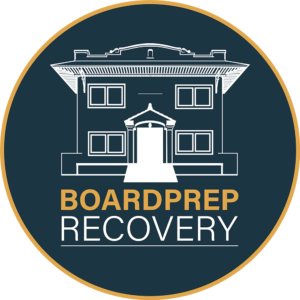According to a current assessment published by the National Center for Biotechnology Information (NCBI), “Opioids are the most effective and widely used drugs in the treatment of severe pain.”[1] Given they’re so commonly used, what is problematic is how addictive these powerful pharmaceutical drugs are.
The Mayo Clinic states, “Opioids are highly addictive, in large part, because they activate powerful reward centers in your brain. Anyone who takes opioids is at risk of developing addiction. Your personal history and the length of time you use opioids play a role, but it’s impossible to predict who’s vulnerable to eventual dependence on and abuse of these drugs.”[2]
As for how many people in the United States are affected by what has been called “the opioid crisis,” the U.S. Department of Health and Human Services (HHS) reports that 1.27 million Americans are currently receiving medication-assisted treatment (MAT) for opioids, and the most recent survey found a 142% increase in the number of patients receiving MAT at HRSA-funded health centers.[3]
So, what is a person to do who finds himself/herself faced with an opioid dependency or addiction?
Since the effects of opioid withdrawal can be extreme and even life-threatening, it is highly recommended to seek medical support when detoxing from opioid use. One can typically find such support at a local drug rehab facility or treatment center.
Following opioid detox, it is further recommended one enter treatment—either in an inpatient residential program or an outpatient program—in order to learn essential information about both addiction and recovery, get therapeutic counseling and group support to assist in one’s healing from the ravages of the disease of addiction, and become familiar with and begin adopting new attitudes and behaviors to decrease the risk of relapse and establish a new life in recovery.
As for the basics of withdrawal management and the MAT protocol for detoxing from opioids, here are some of the clinical guidelines, per NCBI sources:
· Withdrawal management (WM) refers to the medical and psychological care of patients who are experiencing withdrawal symptoms as a result of ceasing or reducing use of their drug of dependence, including opioids.
- Providing withdrawal management in a way that reduces the discomfort of patients and shows empathy for patients aims to build trust between patients and treatment staff.
- Patients in withdrawal should be accommodated away from patients who have already completed withdrawal. Healthcare workers should be available 24 hours a day. Workers should include, at minimum:
–A doctor who sees patients on admission and is on call to attend to the patient in case of complications; and,
–Nurses who are responsible for monitoring patients in withdrawal, dispensing medications as directed by the doctor and providing the patient with information about withdrawal.
- The WM area should be quiet and calm. Patients should be allowed to sleep or rest in bed if they wish, or to do moderate activities such as walking. It will be good to offer patients opportunities to engage in meditation or other calming practices.
- Patients in withdrawal should not be forced to do physical exercise. Physical exercise may prolong withdrawal and make withdrawal symptoms worse.
- Patients in withdrawal may be feeling anxious or scared. It is recommended to offer accurate, realistic information about drugs and withdrawal symptoms to help alleviate anxiety and fears.
- Patients should be monitored regularly (3-4 times daily) for withdrawal symptoms and complications.
- For the management of mild opioid withdrawal, patients should drink at least 2-3 liters of water per day during withdrawal to replace fluids lost through perspiration and diarrhea. Also provide vitamin B and vitamin C supplements.
- For the management of moderate to severe opioid withdrawal symptoms and complications, use the protocol for management of mild withdrawal, but with the addition of clonidine or opioid medications, such as buprenorphine, methadone or codeine phosphate.
- Regarding follow-up care, acute opioid withdrawal is typically followed by a protracted withdrawal phase that lasts for up to six months and is characterized by a general feeling of reduced well-being and strong cravings for opioids. This craving often leads to relapse to opioid use. To reduce the risk of relapse, patients should be engaged in psychosocial interventions such as are provided in addiction treatment programs. Patients who repeatedly relapse following withdrawal management are likely to benefit from methadone maintenance treatment or other opioid substitution treatment.
In conclusion, it’s common for people who complete withdrawal management or MAT for detoxing from opioids to relapse to drug use. Given this, it’s unrealistic to think that MAT for detoxing from opioids will, by itself, lead to recovery from opioid dependence or addiction. Instead, it should be emphasized, medication-assisted treatment for detox from opioid dependence is an important first step prior to commencing treatment at a qualified addiction treatment center.
[1] Opioids – PubMed (nih.gov)







